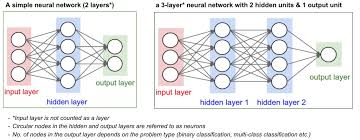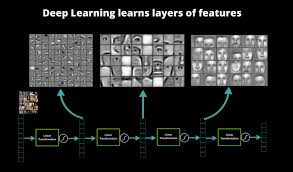Understanding Neural Network Layers: The Building Blocks of AI
Neural networks are at the heart of many artificial intelligence (AI) systems, powering everything from image recognition to natural language processing. These sophisticated models are inspired by the structure and function of the human brain, and they rely on layers of interconnected nodes, or “neurons,” to process data. In this article, we’ll delve into the different types of neural network layers and their roles in creating intelligent systems.
The Basics of Neural Network Architecture
A neural network typically consists of an input layer, one or more hidden layers, and an output layer. Each layer contains a number of neurons that perform computations and pass their results to the next layer. The complexity and depth of a neural network can vary greatly depending on its intended task.
Input Layer
The input layer is the first point of contact between the neural network and the outside world. It receives raw data in a format that can be processed by subsequent layers. Each neuron in this layer represents a feature of the input data.
Hidden Layers
The hidden layers are where most of the computation occurs within a neural network. These intermediate layers transform inputs into something that the output layer can use. Hidden layers can be composed of various types of neurons that help detect patterns or features within the data.
Dense Layers
A dense layer, also known as a fully connected layer, is one where each neuron is connected to every neuron in both the preceding and following layers. Dense layers are common in many types of neural networks.
Convolutional Layers
In convolutional neural networks (CNNs), which are often used for image processing, convolutional layers apply filters to their inputs. These filters help detect spatial hierarchies such as edges or shapes within images by preserving the relationship between pixels.
Recurrent Layers
Recurrent neural networks (RNNs), used frequently for time series analysis or language modeling, contain recurrent layers that process sequences of data by maintaining a ‘memory’ (state) from one input to the next.
Output Layer
The output layer produces the final result for given inputs. For classification tasks, this often involves determining which category an input belongs to. For regression tasks, it might mean predicting a continuous value.
Sophisticated Variants: Advanced Layer Types
Beyond these basic types, there are more sophisticated variants designed for specific tasks:
- Dropout Layers: Used to prevent overfitting by randomly dropping out neurons during training.
- Normalization Layers: Help improve convergence during training by normalizing the outputs from previous layers.
- LSTM/GRU Cells:In RNNs, Long Short-Term Memory (LSTM) units or Gated Recurrent Units (GRU) can better handle long-term dependencies than standard recurrent units.
- Pooled Layers:In CNNs, pooling reduces dimensionality after convolutional layers by combining outputs from clusters of neurons into a single neuron’s output in the next layer.
- Attention Mechanisms:Often used in conjunction with RNNs, these allow networks to focus on different parts of an input sequence when making predictions—critical for tasks like machine translation.
The Role Of Activation Functions
No discussion about neural network layers would be complete without mentioning activation functions like ReLU (Rectified Linear Unit), sigmoid, and tanh. These functions introduce non-linearities into each neuron’s output—allowing neural networks to learn complex patterns beyond what linear models could capture.
In Conclusion…
The interplay among different types and configurations of layers gives rise to a vast landscape of neural network architectures tailored for various applications across AI fields. Understanding how these components work together is essential for anyone looking to harness or further develop AI technologies.
Decoding Neural Network Layers: Understanding Structure, Types, and Configuration Essentials
- How many layers should neural network have?
- What is CNN and its layers?
- What are the 4 different layers on CNN?
- What are the three layers of an artificial neural network?
- What are the 4 neural networks?
- What is a 3 layer neural network?
- How many layers are there in neural network?
How many layers should neural network have?
One frequently asked question in the realm of neural networks is: “How many layers should a neural network have?” The answer to this question is not one-size-fits-all, as the optimal number of layers in a neural network can vary depending on the complexity of the task at hand, the amount of available data, and the desired level of accuracy. In general, deeper networks with more layers can potentially learn more intricate patterns and relationships within the data, but they also come with challenges such as increased computational complexity and potential overfitting. Finding the right balance between model complexity and performance is crucial in determining the appropriate number of layers for a neural network to achieve optimal results.
What is CNN and its layers?
Convolutional Neural Networks (CNNs) are a type of neural network architecture commonly used in image processing and computer vision tasks. CNNs are designed to automatically and adaptively learn spatial hierarchies of features from the input data. The key components of a CNN include convolutional layers, pooling layers, and fully connected layers. In convolutional layers, filters are applied to input data to detect patterns such as edges or textures. Pooling layers reduce the spatial dimensions of the data by down-sampling, helping to make the network more robust to variations in input. Fully connected layers at the end of the network process the extracted features for final classification or regression tasks. Overall, CNNs have revolutionized image analysis by effectively capturing intricate patterns in visual data, making them a powerful tool in various applications such as object recognition, image segmentation, and more.
What are the 4 different layers on CNN?
In convolutional neural networks (CNNs), the four main types of layers are the input layer, convolutional layer, pooling layer, and fully connected layer. The input layer receives the raw data, typically an image in the case of image processing tasks. The convolutional layers apply filters to detect patterns and features within the input data. Pooling layers reduce the spatial dimensions of the convolutional layers to decrease computation time and prevent overfitting. Finally, the fully connected layers process the extracted features from previous layers to make predictions or classifications based on the input data. Each of these layers plays a crucial role in enabling CNNs to effectively learn and recognize patterns in complex datasets like images.
What are the three layers of an artificial neural network?
In an artificial neural network, the three fundamental layers are the input layer, hidden layers, and output layer. The input layer serves as the entry point for external data, where each neuron represents a specific feature of the input. The hidden layers, located between the input and output layers, perform complex computations to extract patterns and features from the data. Finally, the output layer generates the network’s final predictions or classifications based on the processed information from the hidden layers. These three layers work together harmoniously to enable neural networks to learn from data and make intelligent decisions across various tasks and applications.
What are the 4 neural networks?
When discussing the “four neural networks,” it often refers to four common types of neural network architectures that are widely used in various applications of artificial intelligence. These include Feedforward Neural Networks (FNNs), where information moves in only one direction from input to output layers without cycles or loops; Convolutional Neural Networks (CNNs), which are particularly effective for image and video recognition tasks due to their pattern recognition within hierarchical levels; Recurrent Neural Networks (RNNs), which excel in processing sequences and time-series data due to their internal memory system; and Long Short-Term Memory Networks (LSTMs), a special kind of RNN capable of learning long-term dependencies within sequence data. Each network type is designed with a specific layer structure and connectivity pattern to optimize performance for its intended task.
What is a 3 layer neural network?
A 3-layer neural network refers to a neural network architecture consisting of three main layers: an input layer, a hidden layer, and an output layer. In this setup, the input layer receives the initial data or features to be processed, the hidden layer(s) perform complex computations and transformations on the input data, and the output layer generates the final result or prediction based on the processed information. Each layer in a neural network plays a crucial role in information processing and learning, with the hidden layer(s) acting as intermediaries that extract relevant patterns from the input data before passing it on to the output layer for decision-making or classification tasks. The 3-layer neural network structure is a fundamental configuration that can be expanded or modified to suit different problem domains and achieve desired outcomes in machine learning applications.
How many layers are there in neural network?
The number of layers in a neural network can vary depending on the complexity of the model and the specific task it is designed to perform. In general, a neural network consists of an input layer, one or more hidden layers, and an output layer. However, deep neural networks can have dozens or even hundreds of hidden layers, giving rise to the term “deep learning.” The depth of a neural network plays a crucial role in its ability to learn intricate patterns and representations from data. As researchers continue to explore more sophisticated architectures and training techniques, the question of how many layers are optimal for a neural network remains a topic of ongoing investigation in the field of artificial intelligence.




